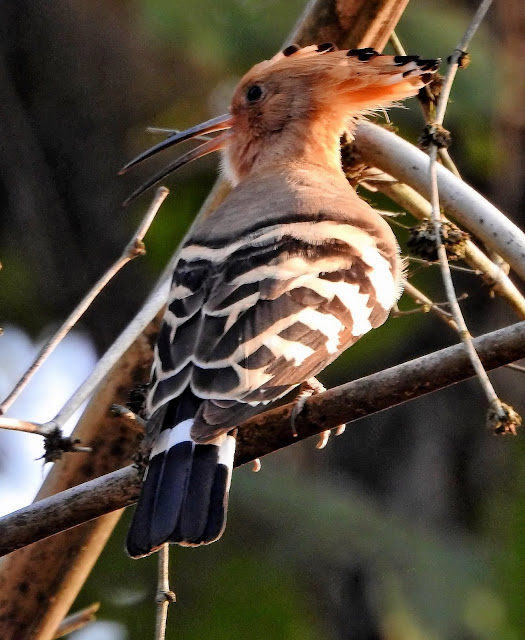The white-browed wagtail or large pied wagtail (Motacilla maderaspatensis) is a medium-sized bird and is the largest member of the wagtail family. They are conspicuously patterned with black above and white below, a prominent white brow, shoulder stripe and outer tail feathers. White-browed wagtails are native to South Asia, common near small water bodies and have adapted to urban environments where they often nest on roof tops. The specific name is derived from the Indian city of Madras (now Chennai).
The white-browed wagtail is the largest species of wagtail at 21 cm (8.3 in) length. It is a slender bird, with the characteristic long, constantly wagging tail of its genus. It has black upperparts, head and breast, with a white supercilium and large white wingbar. Unlike white wagtails it never has white on the forehead. The rest of the underparts are white. The female has the black less intense than in the male. Juveniles are like the females brown-grey where the adult is black.
The white-browed wagtail is a resident breeder in India and is endemic to the Indian subcontinent. It is found south of the Himalayas, east of the Indus system and to the west of Bangladesh. It is rare in the higher altitude regions but has been seen in Ladakh on the edge of the Tibetan plateau. In most of India it is found below 1000 m but in southern India it goes up into the hills up to 2200 m. It is very rare in the Indus valley area. It is absent from the Sind region of Pakistan. It is found in open freshwater wetland habitats. It is one of the few Motacilla wagtails that has adapted well to urban habitats and is often found perched on overhead water storages in residential buildings.
It is a rare winter visitor to Sri Lanka and have possibly extended their range in recent times.
Usually seen in pairs or small groups near open water. They call often especially in the mornings and are active like most other wagtails. They will perch on the ground as well as on wires or on buildings. The song is long and loud with many different notes. The usual call is a wheezy "wheech". They can fly fairly rapidly for long distances and they fly with a bounding (dipping and rising) flight pattern and have been recorded to travel at the speed of about 40 km/h.
Endoparasitic filarial parasites of the species Splendidofilaria singhi have been recorded in individuals of the species.

%2010.jpg)
%2011.jpg)
%2012.jpg)













































